The post Tratak-Voluntary fixation of eyeballs appeared first on Gnosis Medical Yoga - Blog.
]]>The greater part of eyeball (posterior 5/6th) is spherical & anterior 1/6this convex. The posterior 5/6th part has outer white opaque wall called sclera & anterior 1/5this transparent called cornea. The center of cornea has pigmented part called iris with an aperture in center called pupil.
There are 3 pairs of muscles responsible for movements of eyeball. 2 pairs are straight hence called Superior Rectus, Inferior Rectus & Medial & lateral Rectus. One pair has oblique muscles, called as Superior Oblique & Inferior Oblique.
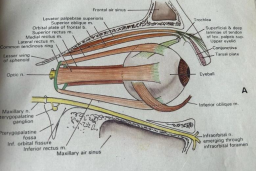
Movements of eyeball mediated by these muscles are up & down, medial (inward) & lateral (outward), combined convergence (downward & upward) & divergence(downward & upward). In addition, there is torsional movement called intorsion & extorsion.
Nerve supply to these muscles is by three cranial nerves
1. Trochlear- the 4th cranial nerve supplies to Superior oblique muscle
2. Abducent- the 6th cranial nerve supplies to Lateral rectus muscle
3. Oculomotor- the 3rd cranial nerve which supplies to all remaining muscles
with one additional muscle called Levator palpabrae superioris which keeps upper eyelid lifted. This nerve also has parasympathetic fibers supplying sphincter pupillae & ciliaris muscle. Former causes narrowing of pupil and later causes accommodation reflex. This reflex makes the lens more convex for near vision.
Central control of eyeball fixation has two components – Voluntary & Involuntary.
Involuntary fixation of eyeballs is required during head, neck, body movements also in response to auditory stimulus. This is achieved by connecting fibres from visual cortex to brainstem nuclei of oculomotor nerve which controls 4 muscles of eyeball & parasympathetic fibers to sphincter pupillae & ciliary muscles.
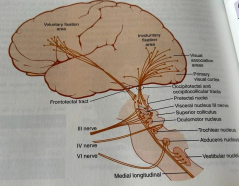
Voluntary fixation of eyeballs is controlled by a specific area in cortex which is present in posterior region of Prefrontal cortex. Fibres arising from this area also project into brainstem nuclei of oculomotor nerve via a separate tract.
Tratak- is a shuddhikriya described in Hath Yoga. One has to gaze at a small object & keep eyes steady until tears come out. This is the description of Tratak given in Hatha Pradipika II-32. The II-33 says that process of Tratak cures many eyes diseases & removes laziness.
The tratak can be practiced with pinpoint small circle at eyesite level or using a flame of candle.
Voluntary fixation of eyeballs on a pin point or flame of a candle will bring signal to brainstem nuclei of oculomotor nerve. Voluntary fixation of eyeballs is done by downward convergence to gaze at tip of nose or upward convergence at center of eyebrows. Since the oculomotor nerves carries parasympathetic fibres, voluntary fixation of eyeballs in Tratak may help to increase parasympathetic tone.
Gazing at tip of nose as mentioned in BG-6-13 & gazing at center of eyebrows in Shambhavi mudra leads to downward convergence or upward convergence respectively. This may lead to activation of parasympathetic system via oculomotor nerve nuclei
Tip about Lacrimal Secretion– Lacrimal gland is the tear producing gland situated at upper part of eyeball. This gland produces tears to keep cornea moist & also protects it from external microinvasion.
This gland is innervated by branch of maxillary division of 5th cranial nerve called Trigeminal nerve. The Secretomotor fibres come from Pterygopalatine ganglion which is peripheral ganglion of parasympathetic outflow. (These fibres also lead to secretomotor effect for glands of nasal & palatine mucosa).
The net effect of tears flowing through eyes (during Tratak) may be intended to increase parasympathetic tone at this ganglion.
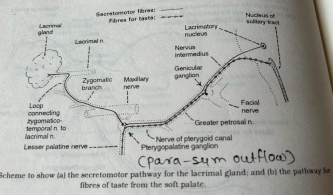
Conclusion – Yogic science offers many techniques to reach the efferent connections of Parasympathetic system. Tratak, Shambhavi mudra & nasal tip gazing are some of them.These techniques are based on voluntary fixation of eye balls. The concerned nerve is third cranial nerve called Oculomotor nerve which carries parasympathetic fibers for sphincter pupillae & ciliary muscles.Reaching & stimulating parasympathetic system helps to generate relaxation response of body.
This response helps the process of homeostasis of body.
******************************************************************
The post Tratak-Voluntary fixation of eyeballs appeared first on Gnosis Medical Yoga - Blog.
]]>The post Simple Tips to Save Knees!! Life is Movement! appeared first on Gnosis Medical Yoga - Blog.
]]>Let us understand its structure.
Knee Joint is made up of three bones. Thigh bone, one leg bone & knee cap. Their surfaces taking part in joint are covered by smooth cartilage. They are nicely bound in a bag like structure (capsule) The Inner lining of this bag produces fluid to reduce friction during movement. The bands (ligaments) surrounding this bag help in mobility & stability of knee joint. Muscles around, move the knee joint into folding & straightening actions. The knee Joint bears 50% of our body weight in upright position, so also our hip joint & ankle joint. Then why knee joint suffers most & no other joints? It is because the bony surfaces forming joint are not matching well with each other.
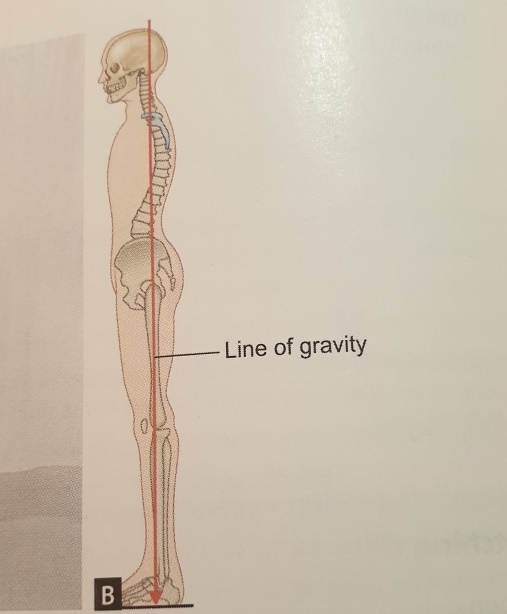
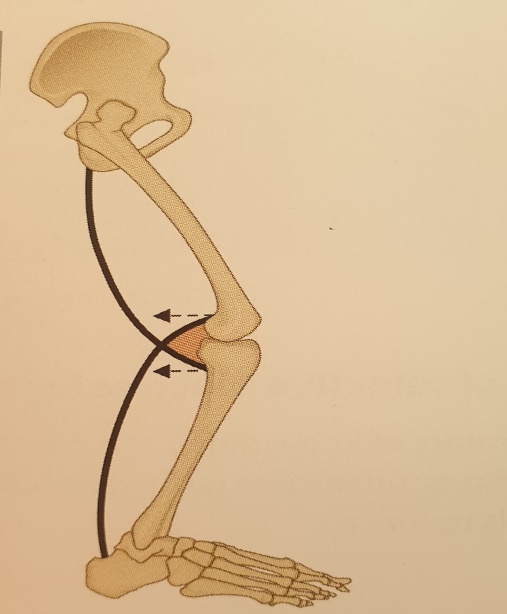
Let us see how we take care of it.
- While standing we have to stand with awareness to bear body weight on both lower limbs equally…..50% + 50% ,not more on one limb
- While standing for long time, develop the habit of tightening the knee cap periodically.
- While walking, try to keep toes in, heels out pattern & not the reverse.
- While walking, we have to maintain total body awareness, in the form of tummy tuck in, rib cage up, shoulders pulled back & widened, head in line with trunk, gaze parallel to ground. This awareness keeps our weight bearing axis in optimum position.
- Appropriate foot wear, preferably well-fitting shoes help the knees.
- Prolonged standing, prolonged walking & sitting (cross legged) may injure the knee joint. We need to optimize our activity.
- To delay the wear & tear (Osteoarthritis) of our knee joint, we need to work on the muscles working on it.
- We have to stretch the calf & hamstring muscles by various techniques
- We have to strengthen the front thigh muscle (Quadriceps) To Keep our knee joint healthy & fit by various ways.
- We need to give sufficient rest to body & mind to help new cell formation (regeneration)
Let us take care of our dear knee Joint & explore the world!!
Dr Vineeta Ketkar
MBBS Family Physician 40+ years
8390572626 (whatsapp only)
The post Simple Tips to Save Knees!! Life is Movement! appeared first on Gnosis Medical Yoga - Blog.
]]>The post KNEE PAIN….? Don’t take painkillers…..! appeared first on Gnosis Medical Yoga - Blog.
]]>Of course it will be of different intensity & in various actions.
But as we know, pain is an indicator of something is wrong somewhere, knee pain gives us hint to pay attention to it & do the needful.( means it expects its servicing)
In fact we should thank the pain & not blame it as a trouble. In case Of Knee pain, If not associated with swelling & other joints ‘ complaints ,it can be reduced by Selective Yogic Postures.
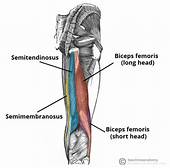
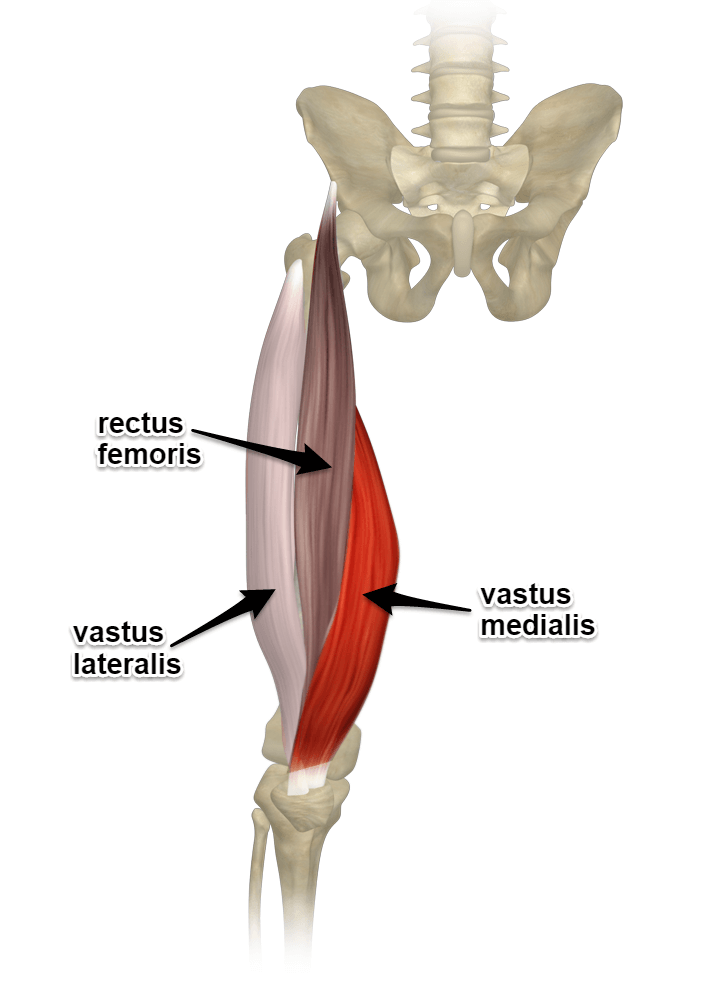
These Postures help to reduce pain & stiffness in the knee joint. Prolonged sitting or standing leads to adaptive shortening of certain muscles in the leg .This also needs correction at hip & ankle joints to mobilize them. This is servicing of knee joint, simple but effective. Selective Yogic Postures offer palliation of symptoms, reducing the need of painkiller medicines. We all know these medicines are injurious to stomach, liver, kidney & bone marrow.
In addition to pain relief, a different set of Selective Yogic Postures are beneficial to delay the wear & tear (degeneration) effects at knee joint. These Postures aim at strengthening of selective muscles .Their sufficient strength keeps the weight bearing axis in balanced position.
So let us respect the signal of knee pain by appropriate action & not bypass it.
After all, Life is Movement & it depends on KNEE FITNESS!
Dr Vineeta Ketkar
8390572626 (whatsapp only)
MBBS Family Physician 40+ years
Founder Gnosis Medical Yoga Foundation
The post KNEE PAIN….? Don’t take painkillers…..! appeared first on Gnosis Medical Yoga - Blog.
]]>The post Thyroid & Medical Yoga appeared first on Gnosis Medical Yoga - Blog.
]]>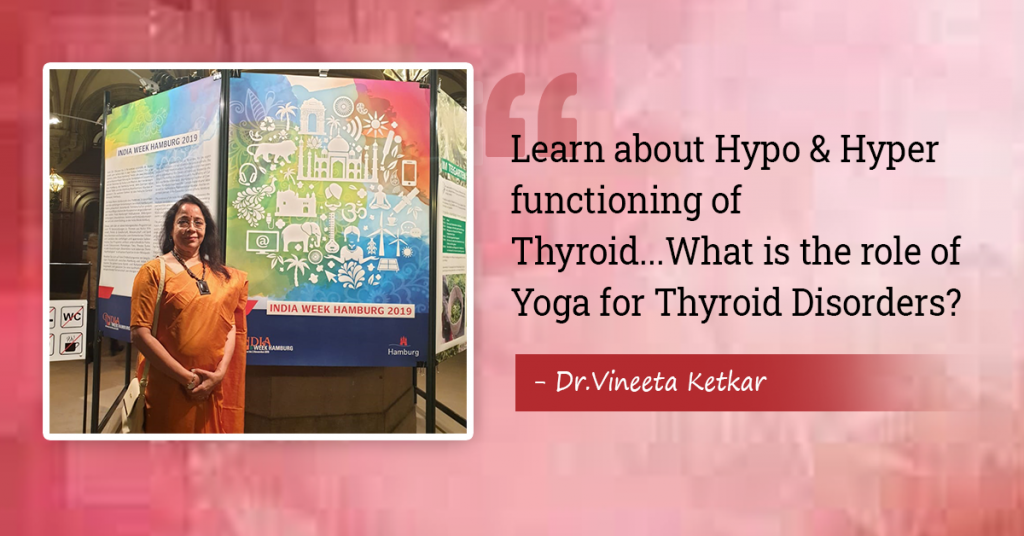
Thyroid autoimmunity can cause several forms of thyroiditis & may lead to hypo or hyperthyroidism.
- Suseptibility of autoimmune thyroid disorders (like any other,, diseases) is determined by genetic & environmental factors.
- Autoimmune polyglandular syndrome Type 2 involves occurrence of autommune thyroid dysfunction, with DM type I, Pernicious Anemia, Vitiligo, Addison’s disease)
- Causal factor for stress in the autoimmune process is not clearly established.
- Viral thyroiditis does not lead to autoimmune thyroid disorders.
- Thyrotoxicosis of Grave’s disease is caused by antibodies which bind to TSH receptors, mimicking its action.
- In some cases TSH receptor – antibodies can block or stimulate the receptors, leading to oscillation between hypo & hyper thyroidism, in such cases close supervision is a must.
- Antibodies to TPO and TG are readily measured in case of Hypothyroidism.
- Level of 🡩 TSH upto 10 with Normal free T4 is due to compensation by normal cells, called sub-clinical Hypothyroidism. (May be goiterous).
- Level of 🡩 TSH > 10 with low level of free T4 is called Clinical or overt Hypothyroidism.
- Later stage of the disease, may lead to atrophic thyroiditis.
- Grave’s disease of thyro toxicosis accounts for 60 to 80 % of hyperthyroidism.
- Other causes of hyperthyroidism are toxic multinodular goiter, toxic adenoma.
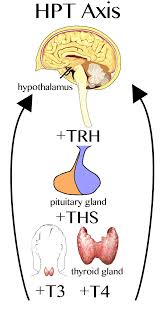
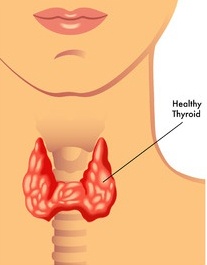
Causes of Thyroiditis
1) Acute thyroiditis – is rare, but when present in children or young abult presents WITH PAIN IN THYROID, fever, DYSPHAGIA. It may become suppurative.
2) Sub-acute thyroiditis – This is also called a Viral / granulomatous / deQuervein’s Thyroidits.
The virus can be of mumps, coxachi, influenza, adeno, echoviruses. The diagnosis is offen missed as – pharyngitis. Age commonly between 30 to 50 yrs., women affected more.
The thyroid gland shows patchy infiltration leading to granuloma, later on fibrosis. Finally thyroid returns to normal, usually several months atter onset.
So initially due to follicular destruction, there is release of TG & T4 leading to 🡩 T3 T4 & Low TSH. During destructive phase T3 T4 levels drop with 🡩 TSH levels. Finally all levels come to normal.
Patient presents with pain in thyroid with swelling, mild fever OIE – thyroid shows painful, asymmetrical nodule, throat normal (though pt c/o sore throat)
Diagnosis is done in 3 phases.
1] Thyrotoxic phase, 2] Hypothyroid phase 3] Recovery phase.
Large doses of Aspirin 600 mg – every 4/6 hrly, may be prednisolone required 40 – 60 mg, Antithyroid medicines are not required, T4 supplementation may be required in prolonged 2nd stage, but in low doeses for natural recovery.
3) Chronic Thyroiditis – The most common form of chronic Thyroiditis is Hashirnoto1 5 autoimmune Thuroiditis – often presents as, firm – hard goiter of variable size. Riedel’s thyroiditis is a rare condition, occurring in women (middle aged) with insidious painless goiter causing pressure symtoms, on trachea, oesophagus, recurrent laryngeal nerve, neck veins. Thyroid dysfunction is uncommon. Diagnosis is done by FNAC. Surgical excision is required to relieve pressure symtoms.
4) Silent Thyroiditis – Also painless thyroiditis, offen occurs post – partum – 3-6 mts. after delivery. It has a course like sub-acute thyroiditis & occurs in patients, with underlying authoimmune thyroid disease. Typically a phase of thyrotoxicosis for 2-4 wks, then a phase of hypothyroidism for 4-12 Wks, followed by resolution. To distinguish from Subacute Thyroiditis, the ESR is N & TPO A is 🡩. For transient treatment thyrotoxicosis, symptomatic Propranolol – 20-40 mg 3 to 4 times daily, for transient hypostage, T4 may be given in small (50 mcg) doses, but should be -withdrawan & monitored.
5) Durg induced Thyroiditis – Many drugs used for malignancies and chronic hepatitis B or C can lead to thyrioiditis.
So to conclude,
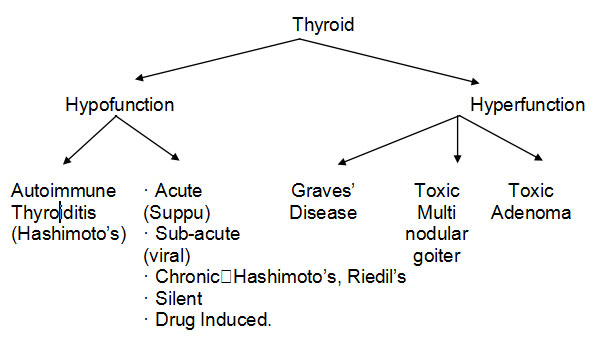
Thyroid function in Pregnancy.
3 factors alter thyroid function in pregnancy.
1) Transient increase in hcg during first Trimester, which stimulates the TSH receptors. This may induce transint hyper thyroidism, but resolves in middle of pregnancy.
2) Esterogen induced rise in TBG during 1st Trimester, which is surtained during pregnancy.This will induce decrease in level of free T3 T4 =- L Hypoth. State.
3) Increased Urinary iodide excretion which can cause impared thyroid hormone synthesis, in the areas of marginal iodine sufficiency. Dietary deficiency will enhance / induce hypothy. Status L supplementation of Iodine is a must.
Yoga & Thyroid
Thyroid is an endocrine gland, situated on trachea (windpipe) in the shape of a butterfly. It is richly supplied by blood. There are four parathyroid glands at the posterior (back) surface of thyroid gland.
Thyroid gland secretes two hormones, T3 – Tri – ido – thyronine & T4 –Thyroxine- Iodine is required for their synthesis. Their secretion is stimulated by Pitutary gland by TSH – Thyroid stimulating hormone. Pitutary is stimulated by hypothalamus by TRH – Thyroid Releasing Hormone. This hypothalamo – pituitary – thyroid axis does have a circadian rhythm.
TSH acts on thyroid cells by combining with receptor. TSH increases the secretion of T3 & T4 by various ways & its release within 30 min.
Disturbed psychological status like anxiety and excitement may affect thyroid function by altering the secretion of TRH & TSH. This effect is mediated by hypothalamus.
Commonly seen thyroid disorders in society are Autoimmune thyroid disorders. They may present clinically, as hypo – or hyper thyroid status.
Role of stress in autoimmune process is not clearly established.
Hence role of Yoga as a Theraputic modality in Thyroid disorders, can not be explained, however the Yogic discipline will minimize anxiety & excitement (by practice of equanimity) helping hypothalamic dysfunction.
The post Thyroid & Medical Yoga appeared first on Gnosis Medical Yoga - Blog.
]]>The post Medical Yoga Conference-2016 appeared first on Gnosis Medical Yoga - Blog.
]]>There was an overwhelming response. Dignitaries from Physiology Department of B. J. Medical college & other medical colleges graced the conference.
The conference was inaugurated in the hands of Dr. Ramesh Bijlani Sir, (Ex-HOD-AIIMS-DELHI). He is the authority in the field of Physiology & Philosophy. In his inaugural speech, he guided us for refinement & purification of our emotions & intelligence. He explained the concept of divine will, divine wisdom & active-voluntary surrender – which should be taken as an opportunity for self-spiritual development. He ended with narration of un-favourable & favourable conditions, under both, we can fulfil purpose of existence.
Dr. Jagdish Hiremth Sir, eminent -cardiologist of Pune, warned us about depression & rumination of thoughts. He stressed the importance of empathy, humor, calmness for helping heart. Dr. Sanjay Phadke, eminent Neuropsychiatrist of Pune elaborated, about the researches, he has undertaken, In the field of Yoga & Neuroscience. He explained the effects of Yogic Postures during practise & lasting effect thereafter. He explained the effects of Yogic postures, at EEG, EMG & Heart rate. He narrated, the way brain functions (e.g. Heuristic) & the pathway of Yoga as volitional change from automatic or random responses.
Dr. Leena Phadke madam, associate professor at KN Medical College, explained the new concepts of normal breathing, where she said neuroplasticity is minimal (at respiratory centers), however she narrated many circuits present, which are interlinked with each other & are excitatory. She elaborated about (CPG) Central Pattern Generation & told us that inter mittant efforts bring better results than continuous.
Dr. Ulka Natu, eminent Gynaecologist & Obstetrician of Thane & also a dedicated Yogic person, explained her research work in the field of Prenatal Yoga. She explained the effects of Omkar recitation on placental circulation, proved by her in foetal Doppler study.
The conference ended with a brief by Dr. Vineeta Ketkar on the subject of Medical Yogatherapy advised at her center. This is based on Ashtang Yoga, Hath Yoga & Rope & Belt Therapy. Padmashree Dr. Sharad M. Hardikar Sir guided everybody at the conference, for patent – centric & research oriented approach, in the field of Yoga.
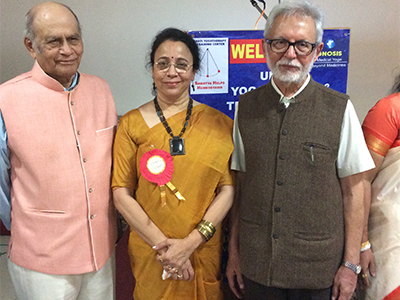
The post Medical Yoga Conference-2016 appeared first on Gnosis Medical Yoga - Blog.
]]>The post Times Of India Articles appeared first on Gnosis Medical Yoga - Blog.
]]>Dignitaries from Physiology Department of B. J. Medical college & other medical colleges graced the conference.
The conference was inaugurated in the hands of Dr. Ramesh Bijlani Sir, (Ex-HOD-AIIMS-DELHI). He is the authority in the field of Physiology & Philosophy. In his inaugural speech, he guided us for refinement & purification of our emotions & intelligence. He explained the concept of divine will, divine wisdom & active-voluntary surrender – which should be taken as an opportunity for self-spiritual development.
Dr. Jagdish Hiremth Sir, eminent -cardiologist of Pune, warned us about depression & rumination of thoughts. He stressed the importance of empathy, humor, calmness for helping heart. Dr. Sanjay Phadke, eminent Neuropsychiatrist of Pune elaborated, about the researches, he has undertaken, In the field of Yoga & Neuroscience. He explained the effects of Yogic Postures during practise & lasting effect thereafter. He explained the effects of Yogic postures, at EEG, EMG & Heart rate.
Dr. Leena Phadke madam, associate professor, explained the new concepts of normal breathing, She elaborated about (CPG) Central Pattern Generation & told us that inter mittant efforts bring better results than continuous. Dr. Ulka Natu, eminent Gynaecologist & Obstetrician of Thane & also a dedicated Yogic person, She explained the effects of Omkar recitation on placental circulation, proved by her in foetal Doppler study.
The conference ended with a brief by Dr. Vineeta Ketkar on the subject of Medical Yogatherapy advised at her center. This is based on Ashtang Yoga, Hath Yoga & Rope & Belt Therapy. Padmashree Dr. Sharad M. Hardikar Sir guided everybody at the conference, for patent – centric & research oriented approach, in the field of Yoga.
Founder Director
Dr. Vineeta Ketkar, MBBS (Mumbai)
Family physician
Unnati Yogatherapy & Training Center
Mob No. 8390572626
www.gnosismedicalyoga.com
ketkarvs@gmail.com
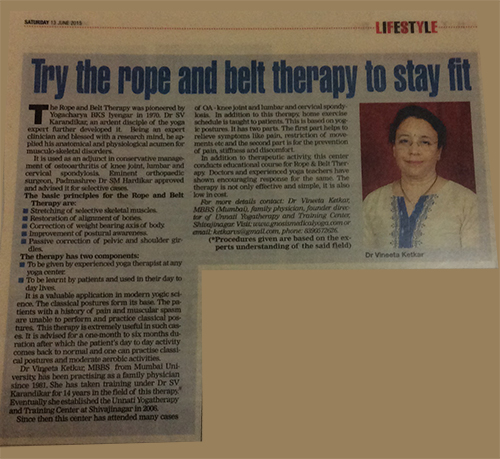
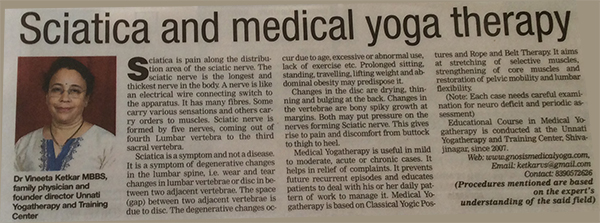
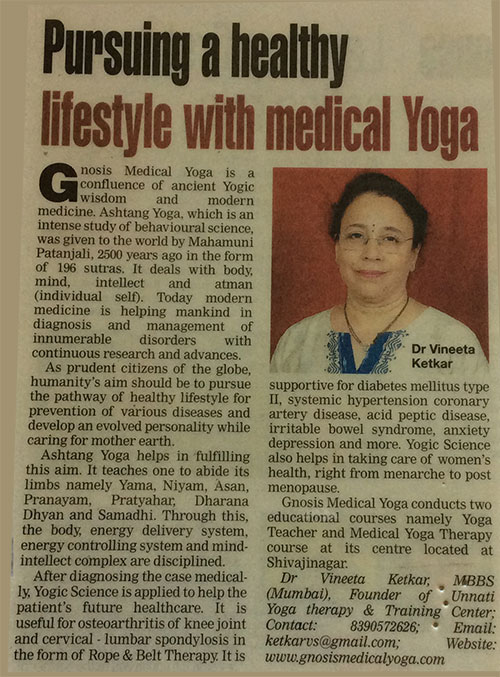
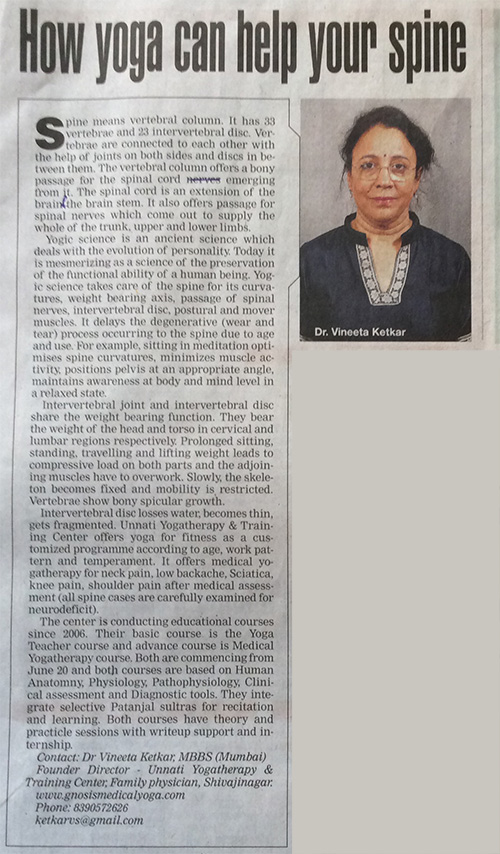
The post Times Of India Articles appeared first on Gnosis Medical Yoga - Blog.
]]>The post Rope & Belt Therapy appeared first on Gnosis Medical Yoga - Blog.
]]>It is used as an adjunct in conservative management of Osteoarthritis of Knee Joint, Lumbar & Cervical Spondylosis.
Eminent Orthopaedic Surgeon, Padmashree Dr. S. M. Hardikar Sir approves and advises it for selective cases.
The basic principles for Rope & Belt Therapy are –
- Stretching of selective skeletal muscles.
- Restoration of alignment of bones.
- Correction of weight bearing axis of body.
- Improvement of Postural awareness.
- Passive Correction of Pelvic & Shoulder Girdles.
Rope & Belt Therapy has two components –
- To be given by experienced Yogatherapist at Yoga Center.
- To be learnt by patient & used in day to day life.
Rope and Belt Therapy is a valuable application in modern Yogic Science. The classical Yogic postures form its’ base. The patients with history of pain & muscular spasm, are unable to perform & practice classical Yogic postures. Rope & belt Therapy is extremely useful in such cases. It is advised for one month duration to six months after which the patients’ day to day activity comes back to normal & one can practice classical Yogic postures & moderate aerobic activities.
Rope & Belt Therapy is extremity useful for highly motivated, adherent, studious, self care type persons. In case of senior citizens, it requires a support system at family level.
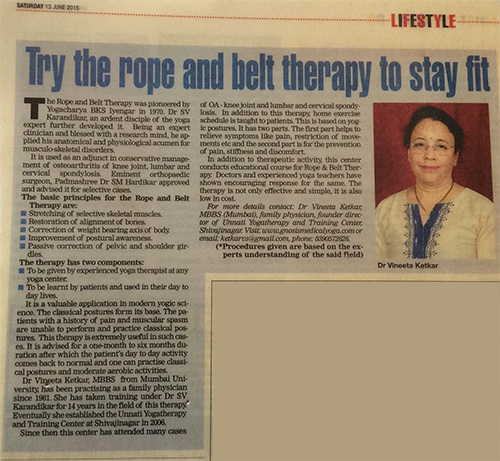
The post Rope & Belt Therapy appeared first on Gnosis Medical Yoga - Blog.
]]>The post Yoga & Irritable Bowel Syndrome (IBS) appeared first on Gnosis Medical Yoga - Blog.
]]>Altered bowel habits are in the form of constipation, diarrhea or both. Associated symptoms may be abdominal pain and or flatulence.
The role of central nervous system in the pathogenesis of IBS is strongly suggested by
- Clinical association of emotional disorders and stress with symptom exacerbation.
- The therapeutic response to therapies that act on cerebral cortex.
No clear diagnostic markers exist for IBS. Hence the diagnosis is based on clinical findings.
Stool reports are normal, i.e. without micro-organisms, pus cells, mucus, and blood. Colonoscopy is normal i.e. without signs of inflammation or ulcers.
CNS dysregulation leads to impaired motor reactivity of small bowel and colon to a variety of stimuli. It also leads to altered visceral sensation. (Both lead to motility disorders like constipation and or diarrhea and abdominal pain).
The neural elements affecting gastro – intestinal activity are –
- Intrinsic System
- Afferent nerves
- Efferent nerves
- Higher neural influence
- The intrinsic system, also called as enteric nervous system is present in wall of bowels. It responds to mechanical and chemical stimuli, i.e. mechanical distension and presence of food
This system makes the gut self sufficient, i.e. its’ work does not get disturbed seriously if the extrinsic nerves are not functioning. These intrinsic nerves release large variety of neurotransmitters.
- Afferent nerves carry mechanical or chemical stimuli from gut. They are afferent fibers of 10th cranial nerve – Vagus. Few travel in dorsal root of spinal cord.
- Efferent nerves reaching gut are parasympathetic and sympathetic fibers. Parasympathetic fibers travel in vagus nerve and in sacral outflow. Sympathetic fibers travel in thoracic outflow. Parasympathetic stimulation leads to increased motility and secretion. Sympathetic activity inhibits motor activity & lead to contraction of sphincters. It aslo needs to reduced blood flow in gut circulation which, may lead to reduced secretions.
- This shows that parasympathetic stimulation will lead to diarrhea and sympathetic stimulation may lead to constipation. Higher neural influence – Limbic system is the seat of emotions. The emotions like fear, anxiety, frustration, insecurity lead to activation of vigilance network, which increases alertness. Stimulation of limbic system (Hypothalamus), limbic cortex and pre-frontal cortex due to emotions and thought process affect the function of gut, via efferent fibers of parasympathetic and sympathetic systems.
Thus psychogenic factor plays a major role in exacerbations & remissions of IBS. It is said that, the sorrow which does not have a vent in tears, makes other organs weep. Hence therapy is directed to both mind & gut.
Medical Yogatherapy offers, predictable help in IBS. Following is the Therapeutic schedule advised.
- 2 days Therapeutic Postures with Props.
- 2 days Pranayam Sequence with Shavasan and Meditation.
- 2 days Basic Yogic Posture Sequence.
Practice of Ashtang Yoga helps in perception correction, cognitive changes, emotional stability & psychological strength. Patients suffering from IBS improve in their symptoms after Yogic study, continued for 6 – 8 weeks.
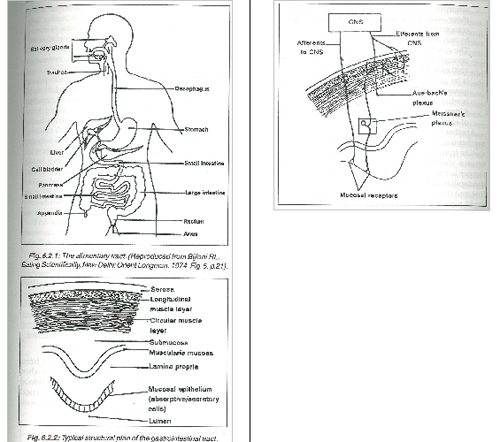
The post Yoga & Irritable Bowel Syndrome (IBS) appeared first on Gnosis Medical Yoga - Blog.
]]>The post Ashtang Yoga & Nervous System appeared first on Gnosis Medical Yoga - Blog.
]]>Study of Ashtanga Yoga helps us at multiple levels, taking care of our health. Science of Yoga is science of discipline. Yama & Niyam discipline our behavior. Asan disciplines our body structure & function. Pranayam disciplines our energy system. Pratyahar disciplines our sensory pathways, which begin at sensory organs and end at sensory centers in cerebral cortex. These pathways have to & fro – connections with limbic system. These connections are responsible for emotions. Dharana & Dhyan discipline our cognitive abilities and balance our emotions & rationality.
All the effects of practice of Ashtang Yoga is mediated by conscious efforts, which is a function of cerebral cortex.
Limbic system is involved in generation of emotions arising after receiving sensory inputs. This occurs at subconscious level.
Brainstem takes care of breathing, circulation, heart function, evident in unconscious state.
Practice of Science of Yoga with honesty, respect and perseverance leads to enhanced pre-frontal cerebral activity. Prefrontal area of cerebral cortex is responsible for elaboration of thoughts after receiving analyzed sensory and motor information.
This can be called as superconscious level.
We can have a brief idea of structure & function of Nervous System from following charts.
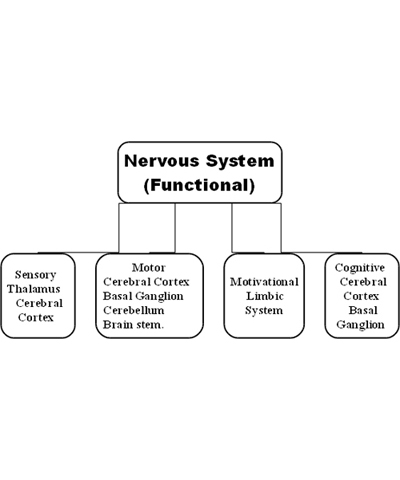
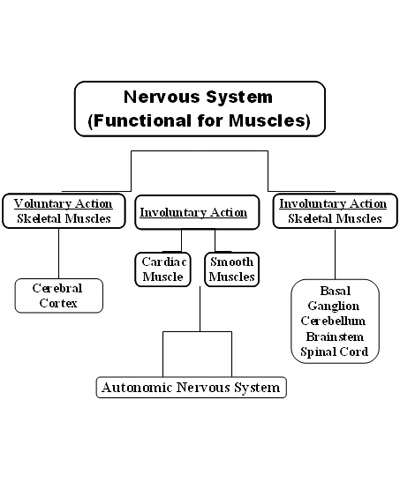
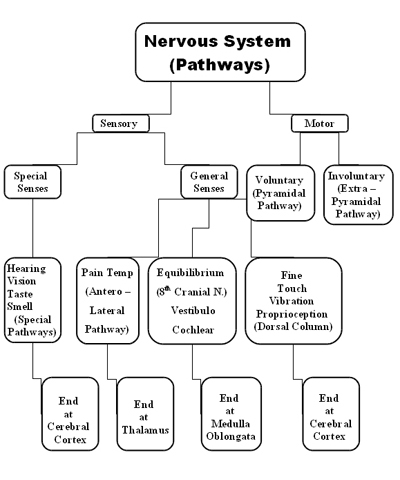
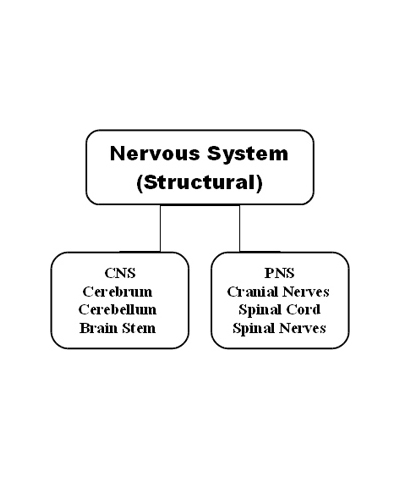
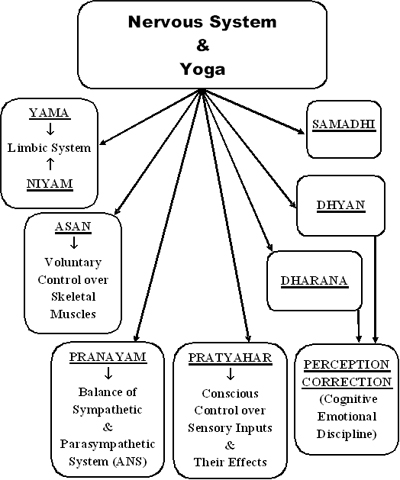
The post Ashtang Yoga & Nervous System appeared first on Gnosis Medical Yoga - Blog.
]]>